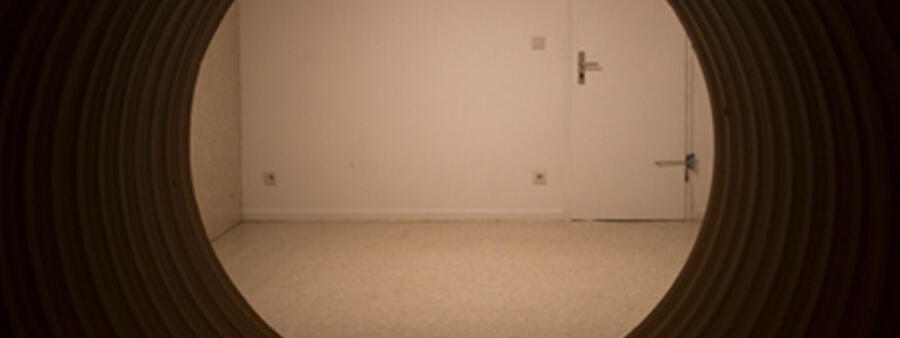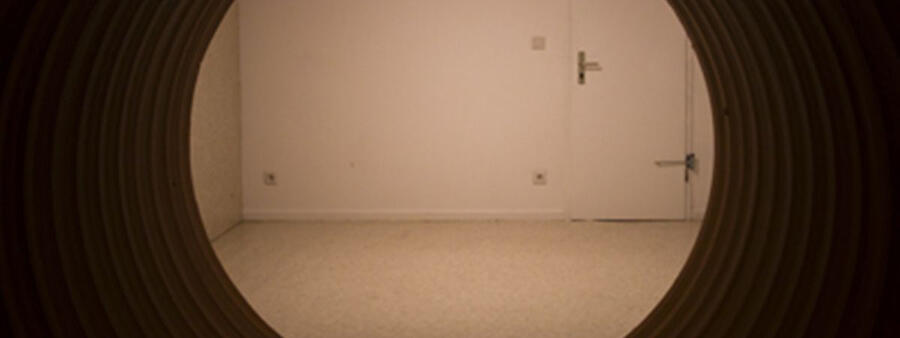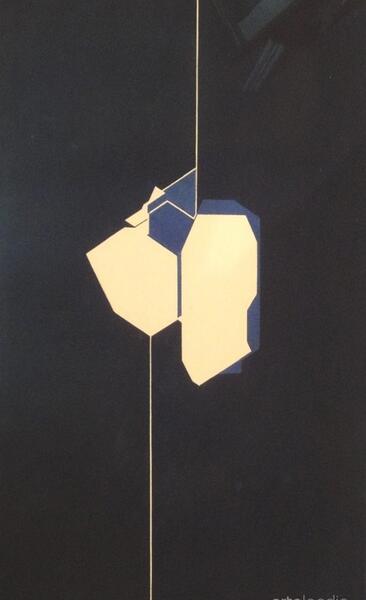CA2M Presents “Collection VII. The Progress Dysfunction”, a collaborative project with Museo Reina Sofía
“The Progress Dysfunction” gathers together a selection of works from the Centro de Arte Dos de Mayo (CA2M) holds in conjunction with others from Reina Sofía Museum. Two public collections separated by just a few kilometers away.

Both shows answer to two different institutional circumstances, however they both converge in the will to critically stare at reality through art. This show is not intended to generate a chronology on current art, but underlying some of the issues developed on some of the works.
The participant artists are: Lara Almacegui, Halil Altindere, Txomin Badiola, Guy Ben-Ner, David Bestué/ Marc Vives, Bleda y Rosa, Dias & Riedweg, Jon Mikel Euba, Patricia Gadea, Cyprien Gaillard, Carlos Garaicoa, Mario García Torres, Luis Gordillo, Federico Gúzman, Carlos Irijalba, Cristina Lucas, Asier Mendizabal, Mitsuo Miura, Vik Muniz, Juan Muñoz, Pablo Palazuelo, Paloma Polo, Gregor Schndeider, Santiago Sierra, Daniel Steegmann and Frank Thiel.
The city is a theme that is present in many of the pieces in the exposition. More than describe it and present the challenges it faces, the city appears as the place where human relations become visible, the place where ideologies clash against the norms that make up our social order. Cities that are real or invented, dreamed or documented, are the definition of our cohabitation, and our political life. Carlos Garaicoa evokes in a complex piece with multiple interpretations the modern paradigm and its hopeful–though probably failed- Utopian proposal. The light that his buildings give off dress the city in a dream-like character in which, as in dreams, ambition is unleashed and everything is, or should be, possible. Cyprien Gaillard revisits the urban landscaped of New Jersey that Robert Smithson, who was born there, had already photographed. The most memorable Land Art artist sought precisely in those anodyne landscapes the same feeling that he applied to his colossal pieces in the desert: that of contemporary monuments. Vik Muniz enters into the successive layers of urban memory by reconstructing the Madrid that does not exist anymore through Gerhard Richter’s work.
Frank Thiel fixes his attention to the minimal, the microscopic in the city by showing us a detail, a surface, a place that can explain everything about his city, Berlin. Lara Almárcegui submerges herself in the underground of the city, analyzing it in detail. Bypulling up the floor that separates the “surface” city from that other underground city, the city is able to understand and accept itself, as in a psychotherapy process that reveals our subconscious to us.
In other cases, the city is converted into a laboratory in which observing occurs in determined disruptions in some of the biggest metropolises of the planet. In Mexico City, Santiago Sierra blocks a highway for a couple of minutes, an act that could happen by chance, but that is still the decision of the artist. In Istanbul, Halil Altindere gives
voice to a Hip-Hop group that defends its neighborhood with the arms that art gives them, as a way to resit global homogenization and economic injustice.
From the City to the Polos. The contemporary political order is complex and includes a multiple system made up of negotiation, legislation, the use of force, and, more than anything, the way that citizens respond to the shared decisions that affect our lives. “Light Years” by Cristina Lucas is a history lesson that reminds us, literally, that democracy is the light that lights up the world, the living legacy of illustration. At the same time, Asier Mendizábal questions on paper the masses, and their difficult and impressive representation in historic narratives as well as in art itself. Bleda and Rosa travel to places that have bloody battles to question their sense, and to reclaim the importance of memory. Paloma Polo, by showing us an uncommon construction made to defend people from the onslaughts of nature, highlights the long process and the great effort that is necessary for it, an example of consensus given based on an imaginary menace.
Individual. Bestué Vives, in “La confirmación”, sings “learn to dance without firm ground, without confirmation”. That seems to be our destiny as beings that will very rarely have a truth to hold on to. In its place, we possess soft truths, a chain of random occurrences that question our place in the world. Txomin Badiola poses questions directly related to the longitude of our life. Jon Mikel Euba also speculates in “One Minute” about time, about every instance of our lives. Gregor Schneider in his complex reflection on art places us in front of our own existence, and makes us think about absence and death. The empty space of his “Children’s Room” connects the emotional dimension of the work of de Juan Muñoz, who always implicated the spectator with his pieces about silence and solitude. These solemn propositions contrast with the vitality of Patricia Gadea and Federico Guzmán.
Art. What is the role of art? What place does it have as a generator of though, and as a place in which other ideas are suspended in order to think about art itself? The questioning of art’s place is clearly visible in each and every one of the pieces in this exposition. In some, it becomes the theme itself. Dias & Riedweg, in an inverse ready-made exercise, play at finding the art piece between “real” objects that are exactly the same. Guy Ben Ner takes the same road by proposing to take art pieces and convert them into “useful” objects, at least for a family bicycle trip. This appropriation appears in many pieces, from Patricia Gadea’s diverse pop vocabulary, to Cyrpien Gaillar’s use of music by The Smiths, to the multiple loans that Bestué Vives takes from contemporary art. García Torres takes the history of art itself as material for his work, and highlights the tensions that are generated between narration and image. Carlos Irijalba, on his part, questions the role of art in a show society. Daniel Steegmann proposes a resolution to the binomial of art and life by incorporating insects that mimic a landscape, perhaps trying to reproduce its beauty. Finally, Pablo Palazuelo as well as Mitsuo Miura and Luis Gordillo propose again the validity of abstraction, and, in this way, art as a place of thought above anything else.
As a whole, the dialogue offered by the exhibition, invites us also to reflect about the role of art in today´s society and about art collecting habit by two public museums as CA2M and Reina Sofia Museum.






